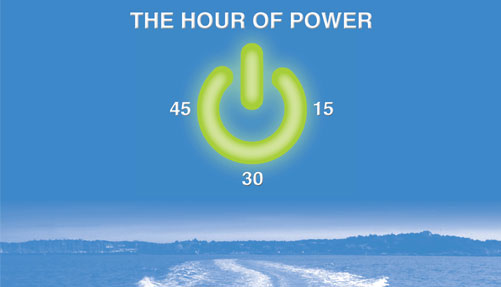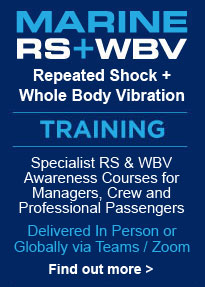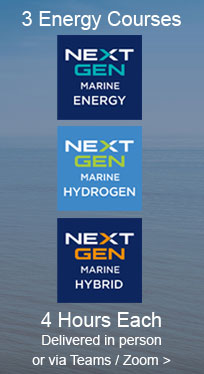
Hybrid Marine Power
Hybrid technology is being utilised by many transport sectors around the world. The marine industry is now recognising the potential of utilising hybrid power linked to innovative propulsion systems.
Certain maritime sectors are potentially well suited to hybrid systems. These include ferries, pilot boats, workboats, wind farm support vessels that have relatively consistent duty cycles. Hybrid systems, including ICE with battery / electric, can be relevant to increase capability for military, patrol, interception and autonomous.
Selecting Hybrid for Efficiency
The professional marine sector is entering a period of rapid change and commercial opportunity. Boat builders, engine manufacturers, technology designers and naval architects are now developing hybrid systems for workboats, pilot boats, tugs, survey vessels, patrol vessels, superyacht tenders and unmanned craft. Benefits include improvements in energy reliability, increased fuel efficiency, lifecycle cost reductions and reduced emissions.
Not all vessels are suitable for hybridization. It is import to use a consistent process of quantifying and classifying operating conditions and the work / engine cycle. This helps to identify which duty cycles are hybrid solutions most relevant for and which sectors may be first adopters.
With vessel life cycles of over 20 years, naval architects and builders of new craft will offer designs that have space and access routes to enable retrofit of hybrid installations. Focus is now on the sub IMO / sub 80 feet (24 metre) workboat, pilot boat and patrol craft sectors to investigate the engineering and systems integration required to bring together viable and sustainable solutions.
The Hour Of Power
The Hour Of Power is a hybrid concept using a combination of diesel / electric / battery, that enables a vessel to use conventional diesel engines and propulsion system, charge batteries when running diesels, charge batteries from shore power, run on battery / electric for up to one hour or loiter on battery for significantly longer. The concept enables vessels to run in and out of port for an hour on electric with battery power and then carry out their open sea work on diesel power. The aim of this hybrid solution is to enhance conventional power and propulsion systems. Vessels can reduce emissions and improve fuel consumption, whilst extending engine maintenance periods and overall engine life.
The Hour Of Power focuses on hybrid solutions linked to viable business cases. This is not just green energy for the sake of it. Many commercial harbours around the world have 10 knot speed limits for low wash or safety reasons and are within one hour of sea. For commercial and professional organisations the simple concept of running vessels with zero emissions around ports will shape decisions that lead to improvements of in-service systems and procurement of next generation vessels. The overall objective is fuel saving and improved efficiency by all means.
Metrics and The Hour Of Power
There are various methods to determine the most efficient speed for a vessel to travel at on battery / electric power. Naval architects can model this specifically vessel by vessel, but to enable operators to identify approximately how many kilowatts of alternative energy they may need to bring onboard there are simple methods. One of the main criteria that enables battery / electric power to work efficiently is to operate the vessel below both ‘hump’ speed and ‘hull’ speed. The start of the hump is beyond the point where the boat exceeds its displacement hull speed.
The hump is clearly defined on the speed / resistance curve for any size of vessel. As speed increases a fuel meter shows fuel consumed, which will significantly increase at the hump. Another source of information is to generate a speed / power curve from the engine management system that shows how many Kilowatts of energy are consumed at a particular speed. For the sake of simple calculation this should be done in zero current and zero wind conditions. Separate allowances can be made for favourable or opposing current and or wind. The main objective is identifying how many Kilowatts of battery energy are required to replace Kilowatts of diesel energy.
Looking To The Hybrid Future
The IMO Energy Efficiency Design Index (EEDI) aims to reduce emissions from large ships by 30% between 2014 and 2025. Countries developing new green energy policies may want to enter the offshore wind, tidal and wave energy sectors by specifying vessels that harmonise with the global reduction in the use of fossil fuels.
Class rules, safety, performance and cost are relevant to naval architects when considering innovative battery power and diesel electric propulsion systems. The challenge for designers is to engineer solutions utilising hybrid technology which are affordable plus manageable in terms of physical size, weight and maintenance.
As new sources of energy become available it is important to identify which energy source best fits the vessel, duty cycle and environment to give efficient power when it is needed. Since no two vessels, routes or captains are alike, decisions can be improved with data logging and analysis. Commercial Off The Shelf (COTS) power management systems will bring together diesel / electric / battery and smart data to create optimised whole vessel hybrid systems.
The Hour Of Power logo and concept are Copyright of Hybrid Marine Power Ltd
For information about The Hour Of Power contact
eNews
09.07.2024
NEXT GEN Marine BATTERY Workshop via Teams
NEXT GEN Marine BATTERY Workshop is being held via…
Events
Southampton International Boat Show 2024
Dates:
13 to 22 September 2024
Location:
Southampton UK
eArticle
06.10.2023
Challenges of Unpredictable Marine Energy
From running Energy Transition training for significant maritime organisations technology…
Video
Round The World solar boat Turanor PlanetSolar
MS Tûranor PlanetSolar is the largest solar boat in the world. This 35 metre (115 feet) catamaran operates solely on…







